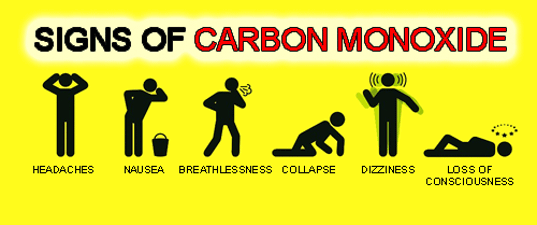Carbon Monoxide
Preventing Carbon Monoxide Poisoning After an Emergency
 What is carbon monoxide?
What is carbon monoxide?
Carbon monoxide (CO) is an odourless, colourless gas that can cause sudden illness and death if inhaled.
CO is found in combustion fumes, such as those produced by small gasoline engines, stoves, blocked chimneys, generators, lanterns and gas ranges or by burning charcoal and wood. CO from these sources can build up in enclosed or partially enclosed spaces. People and animals in these spaces can be poisoned and can die from breathing CO. Every year, dozens of Nova Scotians are admitted to hospital with carbon monoxide poisoning, and in some cases the poisoning is fatal. Symptoms of carbon monoxide poisoning can include headache, nausea, dizziness, and blurred vision.
What is carbon monoxide poisoning?
Exposure to CO can cause loss of consciousness and death. The most common symptoms of CO poisoning are headache, dizziness, weakness, nausea, vomiting, chest pain and confusion. People who are sleeping or who have been drinking alcohol can die from CO poisoning before ever having symptoms.
How to prevent carbon monoxide poisoning
- Every home should have at least one working carbon monoxide detector. The detector’s batteries should be checked twice a year, at the same time smoke detector batteries are checked.
- Never use a gas range or oven to heat a home.
- Never use a charcoal grill, hibachi, lantern or portable camping stove inside a home, camper or tent.
- Never use a generator inside a home, basement or garage, even if the doors and windows are open, unless the equipment is professionally installed and vented.
- If conditions are too hot or too cold, seek shelter with friends or at a community shelter.
- If CO poisoning is suspected, consult a health care professional immediately

Signs of Carbon Monoxide
- Headaches
- Nausea
- Breathlessness
- Collapse
- Dizziness
- Loss of Consciousness
Environmental Health: Emergencies and Extreme Weather Events - Preventing Injuries


